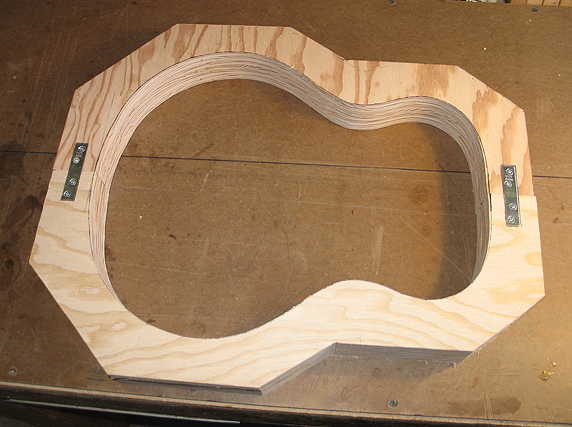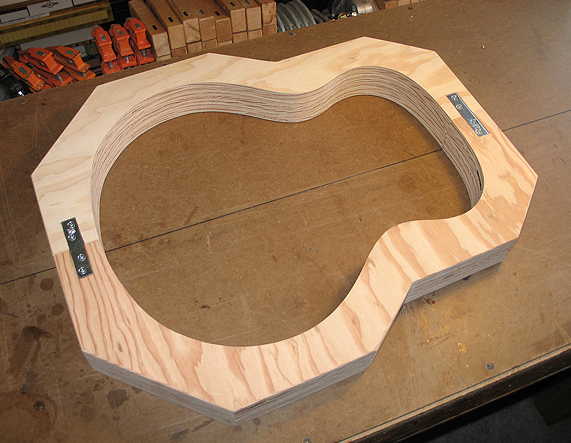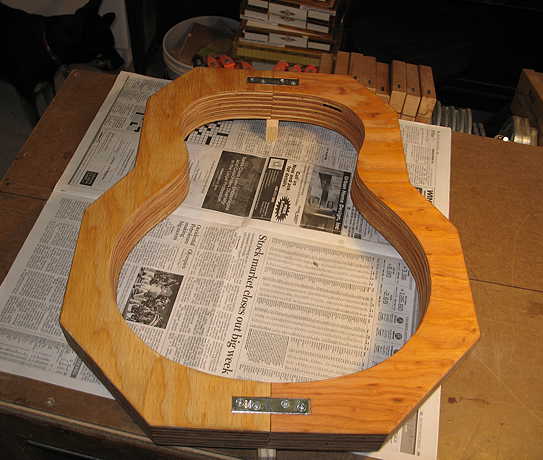In the past I've tried all sorts of ways to join the two halves of a mold --- hinges & suitcase latches, toggle clamps, and mending plates. Mending plates are the easiest; however, when I would use 4 mending plates on top of the mold, on both sides, they would keep the mold from sitting flat against the table. And, when I used toggle clamps or latches on the ends of the mold, they would make it impossible to use a clamp at those ends (for example, to clamp the neck and tail blocks to the sides).
What I've done here is first use my Dremel to rout out pockets for the mending plates, so they sit flush with the mold surface. This way, the mold will now sit flat on the table, and I will also have the ends nice and flat for using clamps. (I don't know why I didn't think of this before --- duh.)

|
|
After I attached the mending plates, I then took the mold back to the oscillating spindle sander and sanded the neck and tail portions up to the lines. Then I did one last sanding session, constantly checking my half-template against the mold, until it fit perfectly.
This photo really doesn't look much different from the previous photo, but if you look really, really closely, you can see that I have sanded the entire mold and have rounded the edges a little bit.

|
|
Finally, I have just applied a coat of shellac to the finished mold. Later tonight I will lightly sand it and apply a second coat of shellac. This will protect the mold somewhat.

|